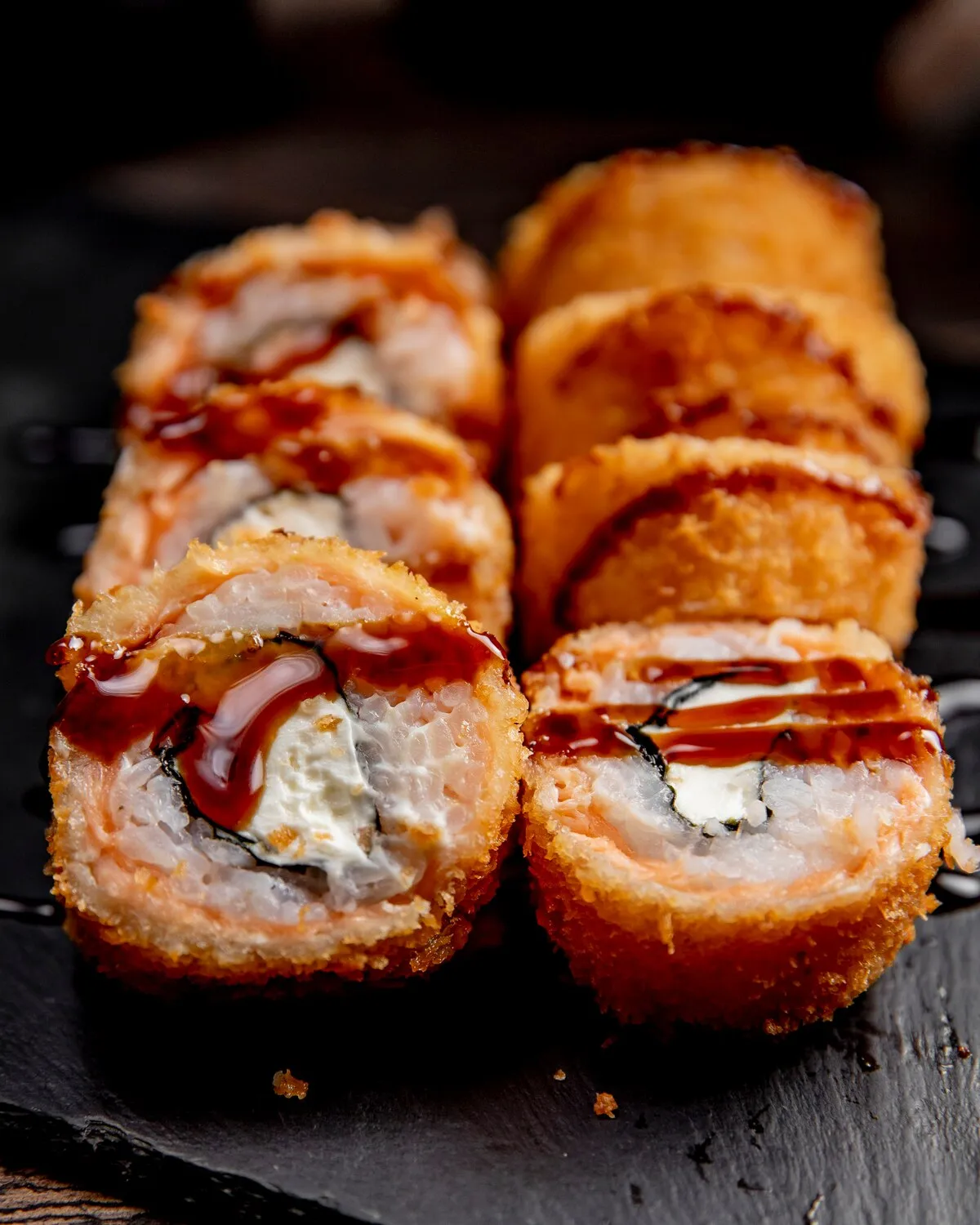
Hot Roll
Fried sushi rolls, a popular choice.
Nutrition Facts
* The % Daily Value (DV) tells you how much a nutrient in a serving of food contributes to a daily diet. 2,000 calories a day is used for general nutrition advice.
Ebisu Sushi - Tijucas
The hot roll, also known as a tempura roll or fried sushi roll, is a modern American invention influenced by Japanese sushi techniques and American preferences for fried foods. It emerged as part of the broader trend of fusion cuisine, adapting traditional sushi for a wider audience.
Hot rolls reflect the Americanization of sushi, catering to palates accustomed to bolder flavors and deep-fried foods. They are often seen as a gateway sushi dish for those unfamiliar with traditional raw fish preparations.
American Sushi Culture
Hot rolls represent a departure from traditional Japanese sushi, emphasizing cooked ingredients and incorporating elements popular in American cuisine. This adaptation has broadened the appeal of sushi, making it more accessible and palatable to a wider range of consumers.
Fusion Cuisine
Hot rolls exemplify the fusion cuisine movement, blending culinary traditions from different cultures to create new and innovative dishes. This approach often involves modifying existing dishes to suit local tastes and preferences.
Hot rolls typically offer a combination of savory, creamy, and crispy textures and flavors. The warm, crispy exterior contrasts with the cool, soft interior, while the fillings provide a rich and often slightly sweet element.
The primary flavors come from the fillings, which often include salmon (providing a rich, oily flavor), cream cheese (contributing a smooth, tangy creaminess), and avocado (offering a buttery texture). The nori seaweed provides a subtle oceanic flavor, while the rice adds a slightly sweet and starchy base. Frying the roll in tempura batter or a similar coating imparts a deep-fried flavor and crispy texture.
Temperature Control
Maintain a consistent oil temperature (around 350-375°F or 175-190°C) to ensure even cooking and a crispy crust. Avoid overcrowding the fryer, as this can lower the oil temperature and result in a soggy roll.
Batter Consistency
The batter should be light and airy, similar to tempura batter. Use ice-cold water or sparkling water to achieve this consistency. Avoid overmixing, which can develop gluten and result in a tough batter.
Frying Time
Fry the rolls for a short amount of time, typically 1-2 minutes per side, until golden brown and crispy. Remove immediately and drain on paper towels to remove excess oil.
Ingredient Quality
Use high-quality sushi rice and fresh fillings to ensure the best flavor. Properly prepare and season the sushi rice for optimal taste and texture.
Explore additional Japanese dishes and restaurants
Explore JapaneseDiscover top dining spots and culinary experiences in Tijucas.
Explore TijucasLearn more about the food culture, restaurant scene, and culinary heritage of Brazil.
Explore Brazil